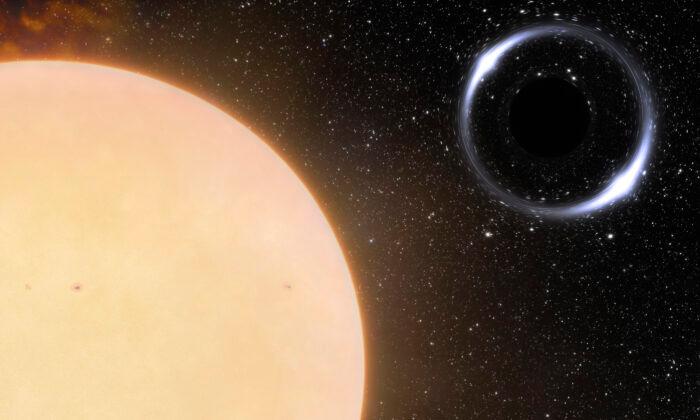Astronomers have discovered the closest known black hole to Earth, which is 1,600 light-years away and is 10 times larger than the sun, according to a new study published on Nov. 4.
The stellar-mass black hole, dubbed “Gaia BH1,” is located in the constellation Ophiuchus, according to the U.S.-based National Optical-Infrared Astronomy Research Laboratory (NOIRLab).
Scientists said that Gaia BH1 is dormant and three times closer to Earth than the previous record-holder, an X-ray binary located 3,000 light-years away in the constellation Monoceros.
Gaia BH1 was found by observing the motion of its companion, a sun-like star that orbits the black hole at about the same distance as the Earth orbits the sun, according to NOIRLab.
El-Badry, an astrophysicist from the Harvard-Smithsonian Center for Astrophysics, said it was the “first unambiguous detection of a sun-like star in a wide orbit around a stellar-mass black hole in our galaxy.”
Stellar-mass black holes have masses ranging from five to 100 times that of the sun and can be active or dormant. Active black holes emit high-energy light in X-rays, whereas dormant ones do not.
Black holes are the universe’s most extreme objects. NOIRLab estimates that the Milky Way galaxy contains 100 million stellar-mass black holes, of which only a handful have been confirmed and the majority are active black holes.
Gaia BH1 is the first dormant black hole ever discovered in “our cosmic backyard,” El-Badry said, adding that he has been searching for dormant black holes for the past four years using various datasets and methods.
“My previous attempts—as well as those of others—turned up a menagerie of binary systems that masquerade as black holes, but this is the first time the search has borne fruit,” he added.
Astronomers used the Gemini North telescope in Hawaii—part of the International Gemini Observatory—and data from the European Space Agency’s Gaia spacecraft to identify the black hole, according to NOIRLab.
“Our Gemini follow-up observations confirmed beyond reasonable doubt that the binary contains a normal star and at least one dormant black hole,” he said.
“We could find no plausible astrophysical scenario that can explain the observed orbit of the system that doesn’t involve at least one black hole,” he added.
However, NOIRLab stated the “peculiar configuration” of the Gaia BH1 system remains a mystery as it cannot be explained by the current models of the binary system used by astronomers.
“It is interesting that this system is not easily accommodated by standard binary evolution models,” El-Badry said. “It poses many questions about how this binary system was formed, as well as how many of these dormant black holes there are out there.”





